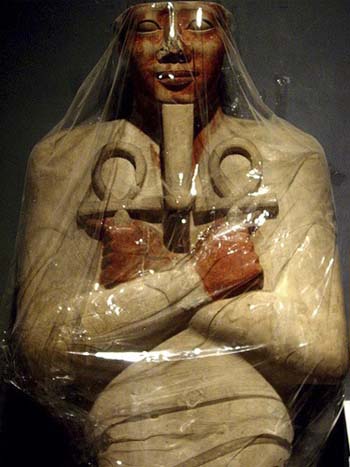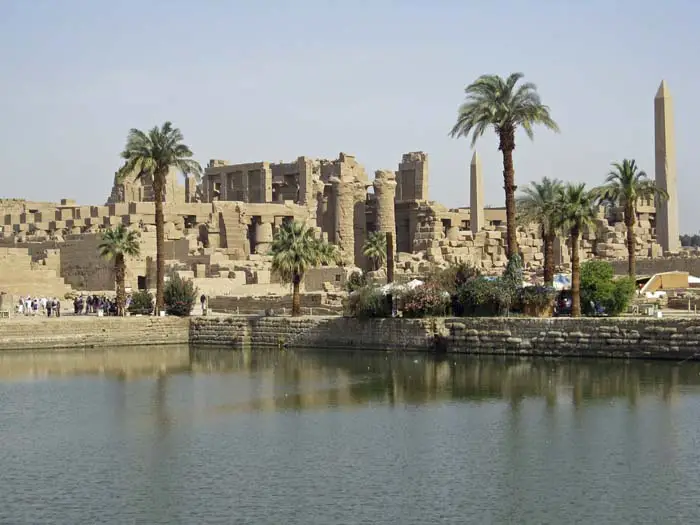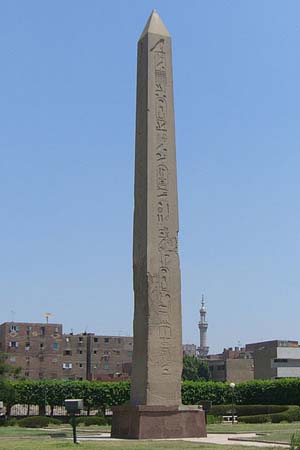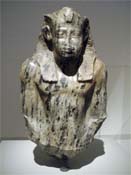Senusret I
Despite being known for long and peaceful reign within Egypt, Senusret I devoted his rule to offensively protecting Egypt’s borders. Egyptologists consider him the most powerful pharaoh of the Twelfth Dynasty of the Middle Kingdom.
Prepared for Power
Senusret was the son of Amenemhat I and his chief wife Nefertitanen. His birth name meant “Man of goddess Wosret” and may have been the name of his maternal grandfather. Egyptologists believe that Amenemhat I made Senusret his co-regent ten years before his death. This was the first instance of co-regency in recorded Egyptian history.

© Tribes of the World - Senusret I
The position of co-regent prepared Senusret for his place as king and firmly established him as heir to the throne. "The Story of Sinuhe” recounts the events that led to his ascension to the throne. While fighting in Libya, Senusret received word of his father’s assassination at the conspiracy of his harem. Senusret returned home and easily took his place as the second king of the dynasty. He then took the throne name of Kheperkare, which means “The Soul of Re comes into Being.”
King Senusret would later repeat the same transitional processes introduced by his father by naming his son Amenemhet II as his co-regent. In addition to Amenemhet II, Senusret would have at least one daughter with his wife, Queen Neferu.
Lengthy Reign
Most historians place Senusret’s reign as 1956-1911 BC or 1971-1928 BC. It is generally accepted that he ruled for 44 years: 10 years as co-regent with his father, 30 years as sole ruler and 3 to 4 years as co-regent with his son.
Most records indicate Senusret’s years as pharaoh as peaceful and prosperous for Egypt, despite indications of a possible famine during his rule. Trade flourished and provided Egyptians with cedar, ivory and other foreign goods. The many golden artifacts attributed to his reign reveal his rule to be one of wealth and affluence.

© Cameron Grant - Senusret I limestone chapel
Senusret effectively managed the country through establishing clear boundaries between individual regions. While he allowed regional governors to continue their authority, he made it known that he was the ultimate authority over Egypt. This firm rule gave Egypt stability and prosperity.
Military Campaigns
Senusret continued his father’s expansion into northern Nubia with at least two military campaigns. By placing a military garrison and a victory stele at Egypt’s southern border, he established a strong military border for Egyptian protection.
Records show that during his rule, he personally led several expeditions into the Libyan Desert to gain control over oases and protect the Delta region. While it appears that he led aggressive military campaigns, the main goal of his military offensives was to secure the borders of Egypt against invasion.
Major Building Projects
Senusret I began his many building projects while still serving as co-regent by the embellishment of major temples, including those at Karnak and Heliopolis. Archaeologists credit King Senusret with over three dozen major projects.

© Rich Jacques - Karnak Temple

Senusret I Obelisk at Heliopolis
The goal of Senusret’s building program was to make his name known throughout all the generations to follow him. He was the first pharaoh to build monuments at each of the main religious cult sites in Egypt.
To celebrate his 30th year of rule, he had two red granite obelisks constructed at the temple of Re-Atum at Heliopolis. Reaching a height of 66 feet, each obelisk weighed 121 tons. One remains standing as the oldest obelisk in Egypt.
At his death, Senusret was placed in his pyramid at el-Lisht. Located one mile south of his father’s pyramid, his complex included nine additional pyramids for his wife and other relatives.
Quick Facts
- Historians are unsure of the birth date of Senusret I.
- Many consider him to be the pharaoh associated in the Biblical story of Abram and Sarai.
- His many building projects led to the spread of a “royal style” of art and relief work throughout Egypt.

